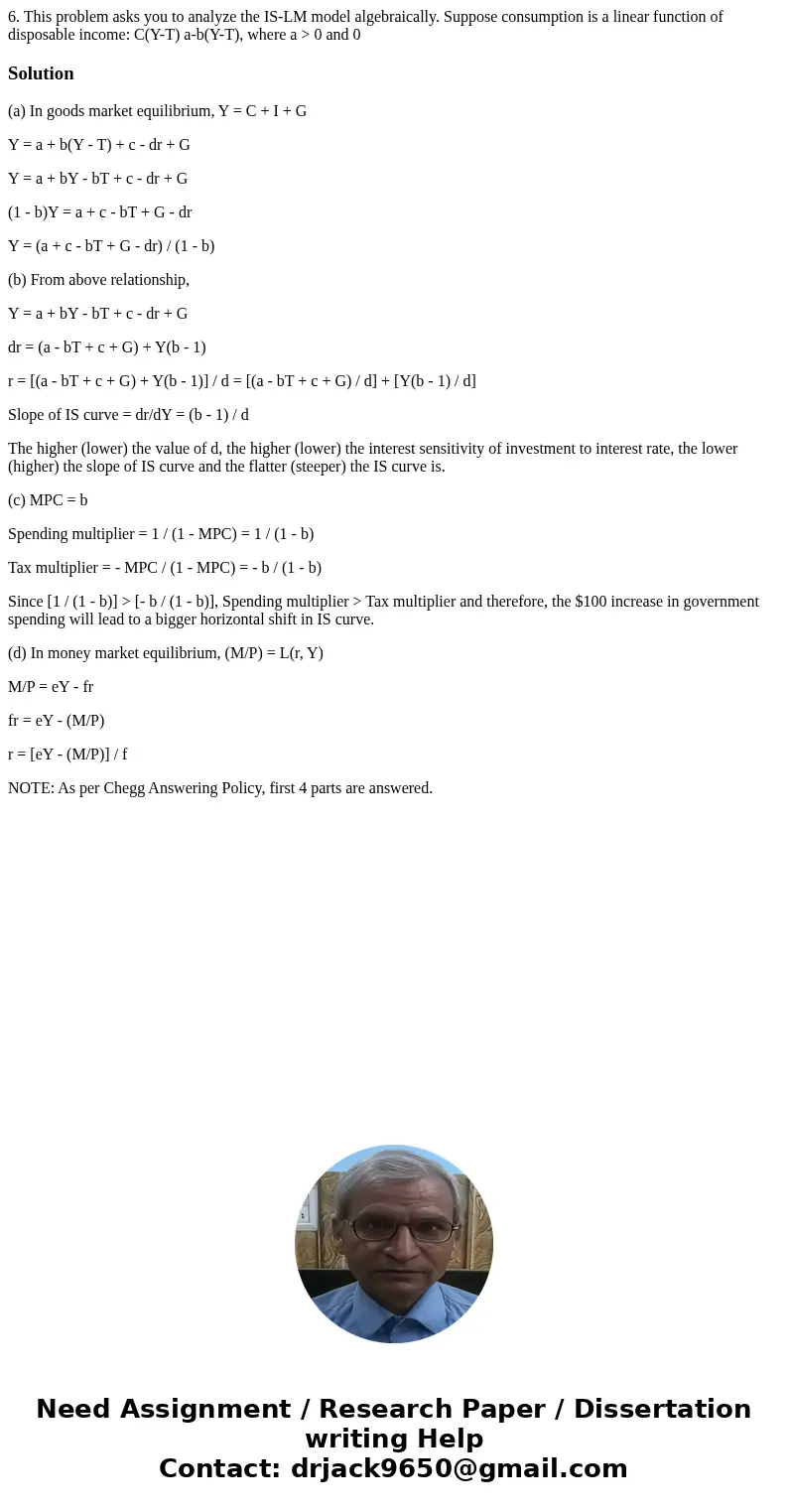6 This problem asks you to analyze the ISLM model algebraica
Solution
(a) In goods market equilibrium, Y = C + I + G
Y = a + b(Y - T) + c - dr + G
Y = a + bY - bT + c - dr + G
(1 - b)Y = a + c - bT + G - dr
Y = (a + c - bT + G - dr) / (1 - b)
(b) From above relationship,
Y = a + bY - bT + c - dr + G
dr = (a - bT + c + G) + Y(b - 1)
r = [(a - bT + c + G) + Y(b - 1)] / d = [(a - bT + c + G) / d] + [Y(b - 1) / d]
Slope of IS curve = dr/dY = (b - 1) / d
The higher (lower) the value of d, the higher (lower) the interest sensitivity of investment to interest rate, the lower (higher) the slope of IS curve and the flatter (steeper) the IS curve is.
(c) MPC = b
Spending multiplier = 1 / (1 - MPC) = 1 / (1 - b)
Tax multiplier = - MPC / (1 - MPC) = - b / (1 - b)
Since [1 / (1 - b)] > [- b / (1 - b)], Spending multiplier > Tax multiplier and therefore, the $100 increase in government spending will lead to a bigger horizontal shift in IS curve.
(d) In money market equilibrium, (M/P) = L(r, Y)
M/P = eY - fr
fr = eY - (M/P)
r = [eY - (M/P)] / f
NOTE: As per Chegg Answering Policy, first 4 parts are answered.

 Homework Sourse
Homework Sourse